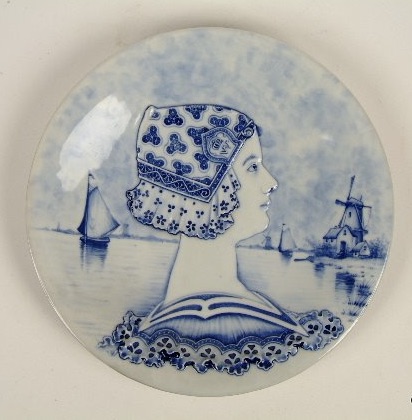
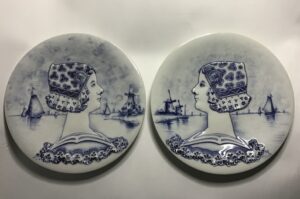
In 1783 in Rauenstein in the German state of Thuringia, three Greiner brothers started a porcelain factory in the castle of Rauenstein, the castle had been empty for quite some time.
They competed with Meissen by producing a similar line. However, their products such as coffee and tea utensils were made of thicker porcelain, which made them less likely to break, making it popular with all walks of life.
In 1874 Mrs. Firth became the owner and in 1881 Franklin Georgi took over the factory. He introduced a Delft decor line, which became a great economic success. In this line, in addition to bowls, gin jars and other utensils, sculpture groups were also made, e.g. of children playing in Dutch costume.
At the beginning of 1900, this factory also made a plate in this Delft style with an image of Queen Wilhelmina in Frisian costume. Made after the then very popular portrait of Wilhelmina made by the French artist Paul Berthon.
The French graphic artist Paul Berthon (1872-1909) was known for his beautiful Art Nouveau posters and color lithographs of women. In 1901 he made this portrait of Queen Wilhelmina, with the complimentary subtitle: Sa Tres Gracieuse Majeste La Reine Wilhelmine. The print shows Wilhelmina as a young, determined queen of the Netherlands, wearing a lace cap and a landscape with tulips and windmills in the background. This image of the young Queen in Frisian costume was very popular and was used on posters, pottery plates, postcards etc.
The plate is made in two different versions, on one the queen looks to the right, on the other to the left; the background of mills and boats also differs slightly. The cap and the lace of the dress are made in beautiful relief.
In 1913 the First Dutch Exhibition on Shipping Area (ENTOS) was held in Amsterdam. This exhibition coincided with the celebrations of one hundred years of independence. For this a dish was made for which the head of Queen Wilhelmina as depicted on the above-mentioned plates was used. This too was made by Rauenstein, which had its widest range on the market that year.
The factory was closed in 1930.
Rauenstein porcelain is still in high demand and is collected by many enthusiasts all over the world.
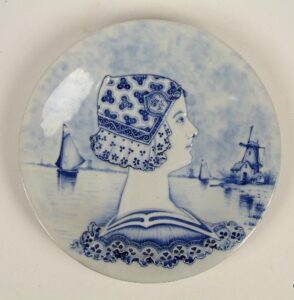

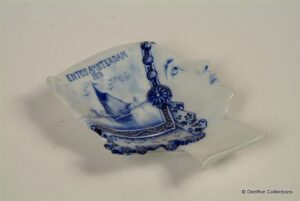
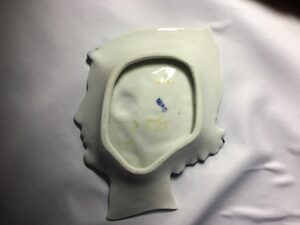
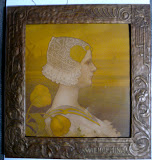
original litho Paul Berthon litho in art nouveau frame
Share This Article












